Monasteries and magic: See the best of Bhutan at these 5 Places
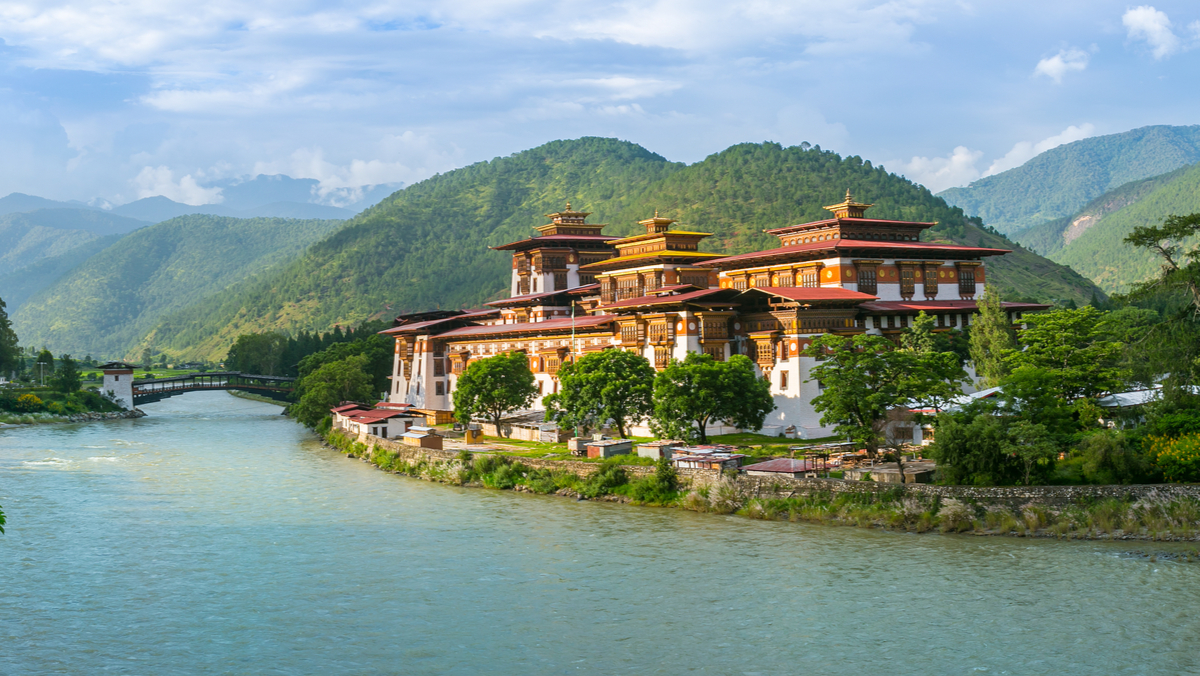
Quick Jumplinks to Navigate
Bhutan is the last Himalayan Kingdom that offers you a unique combination of global extravaganza and ancient culture. Bhutan’s monasteries, winding roads, hillsides, mountain peaks and over 70% of land covered in dense forest makes it one of those countries that see travellers all around the year.
The snow-capped Himalayas and 7000m peaks are not the only highlights of a country so beautiful and scenic that nothing you have come across lives up to it. Valleys full of rhododendrons, wildflowers in every possible colour and pristine white clouds set in the backdrop of the mountain ranges don’t even begin to define Bhutan. It’s a land best experienced in solitude, a country best visited in your own time, and a place worth your next bike trip.
1. Best Time for a Bike Trip in Bhutan
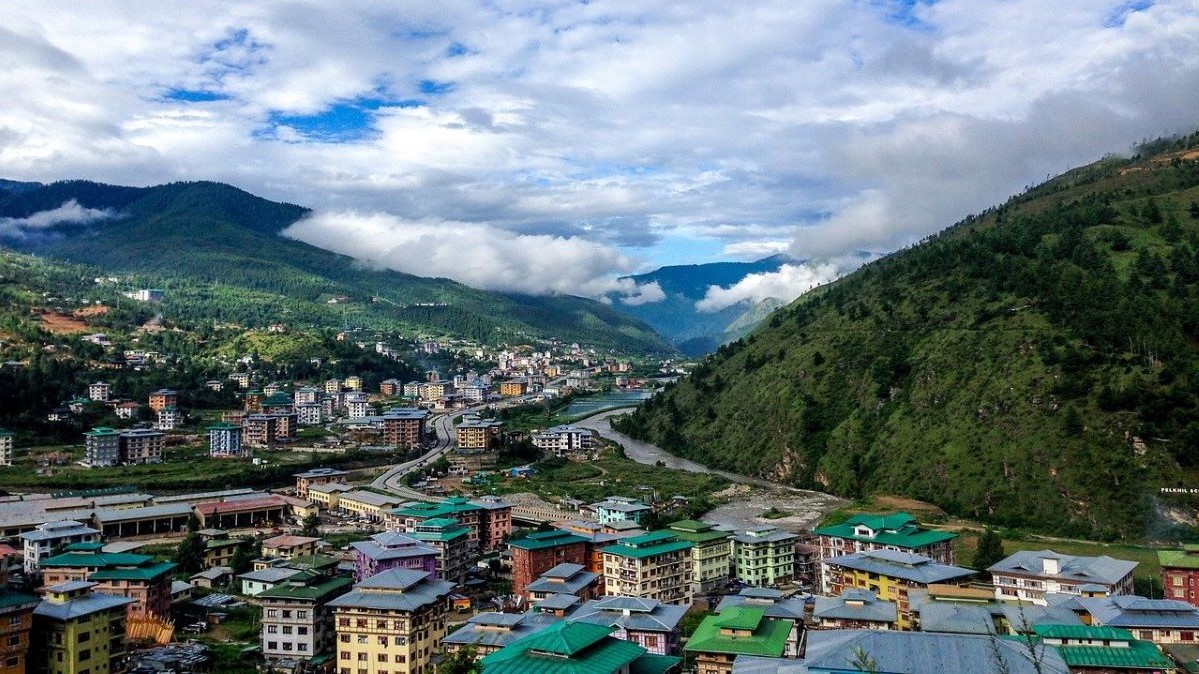
The best time to go for a bike trip in Bhutan is in autumn, that is September to November when the weather is ideal for long drives. March to May is ideal too, which is spring in the Himalayan Kingdom.
2. What to Know Before Taking the Road Trip to Bhutan

- It’s ideal to not plan a trip to Bhutan during the off-season, that is June to August and December to February as you don’t have many tourist activity options then.
- You do not require a Visa to visit Bhutan. You just need to carry a valid passport or voter id.
- To visit places like Punakha, you will need a Restricted Area Permit, which are obtained by travel agencies on your behalf. If you happen to travel on your own, gt the RAP from the immigration office in Thimphu.
- Bhutan is thirty minutes ahead of the Indian Standard Time.
- Bhutanese cuisine is spicier than Indian food, you may encounter chilli as a main dish rather than an ingredient. So take note of the dishes before you order.
3. What Places to Visit on the Bike Trip
When planning a bike trip to Bhutan, it is best to have at least two weeks’ time in your hands for a wholesome experience. Make sure to include these attractions in your itinerary and make a roadmap accordingly:
1. Punakha Dzong

The Punakha Dzong, standing high at six storeys, with a length-width ratio of 180-72 meters, can be crowned as the most splendid dzong in Bhutan. The dzong’s whitewashed walls form a perfect background for the lilac jacaranda trees in spring, and is a sight to marvel at. It’s the country’s tradition to crown its kings in the Punakha Dzong, as it has done for generations. You can reach the dzong via the Bazam Bridge, which was reconstructed in 2008 after the seventeenth-century bridge got washed away in the 1958 floods.
Location: Punakha and Khuruthang, Bhutan
Distance from Punakha: 36.4 kilometres
Why we recommend this place: Of all the wonderful sights the Punakha Dzong has to offer you, there are eighteenth-century gold statues of Buddha, Zhabdrung, and Guru Rinpoche. There’s an assembly hall with originally a hundred pillars, out of which only fifty-four remain now.
2. Tashi Chho Dzong
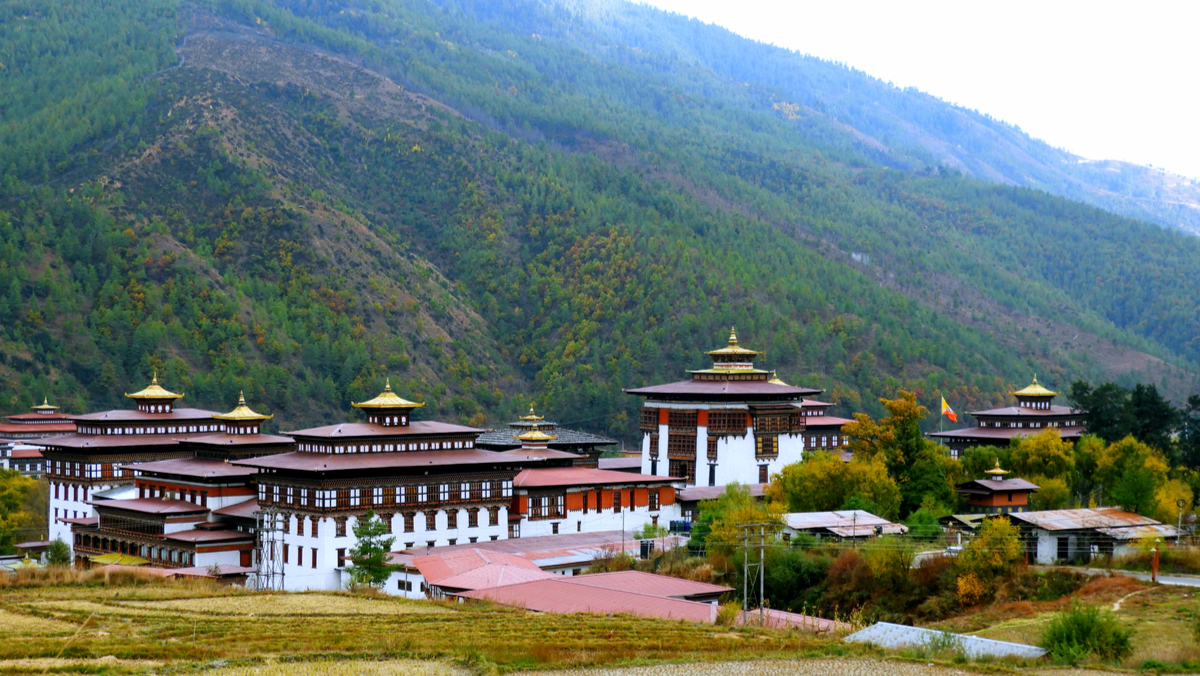
Located on the west bank of Wang Chhu river, this beautiful dzong in northern Thimphu towers at five storeys. With the central tower rebuilt in 1902, the dzong has expanded over the years. The dzong has an outer structure of two storeys, which have a height of two storeys. There are four towers on the four corners of the dzong, which are three storeys in height. The Trashi Chho Dzong is the summer residence of the dratshang, the buddhist monk body.
Location: Thimphu, Bhutan
Distance from Thimphu: 4.5 kilometers
Why we recommend this place: There is a beautiful cantilever bridge in the northeast direction of the dzong, which is traditional in look. The current king resides in the southeast part of the dzong, and therefore this is an attraction that has cultural, religious, as well as royal significance.
3. Taktshang Goemba

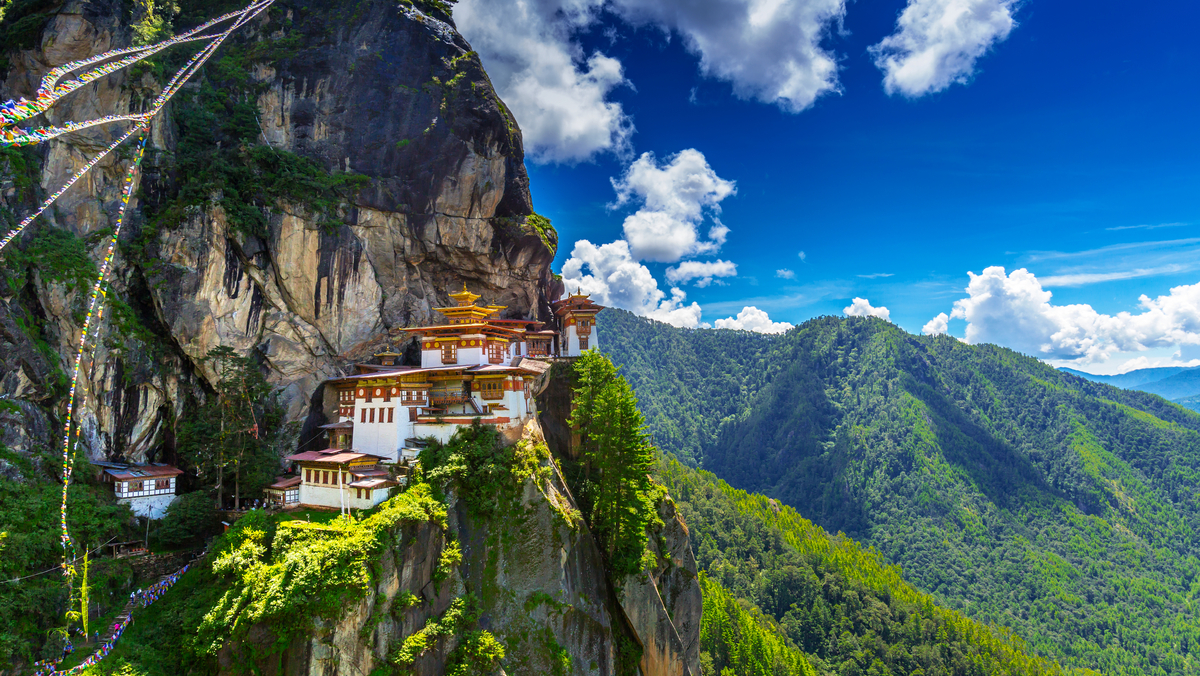
Towering 900 meters above the Paro Valley, the Taktshang Goemba is a remarkable structure and is one of the most visited travel destinations in Bhutan. Also known as the “Tiger’s Nest Monastery”, the very location of the structure takes you by surprise. Set at the very edge of the steep mountain slope, the monastery looks down at the valley and up at the skies rather proudly. The idea of including this destination as part of a bike trip is the fact that you can enjoy a good hike uphill to get here, and enjoy the sacred beauty of the place where you can go around calmly without your travel gears, cell phones, or cameras. You can also visit the Pelphu Lhakhang here, which is a cave where Guru Rinpoche spent three months meditating. See the chapels, courtyards, picturesque beauty all around, and buy blessed lockets at the Drole Lhakhang, which sports an image of Gyelse Tenzin Rabgay, the seventeenth-century founder of Taktshang Goemba. You can also make your way to the original Tiger’s Nest cave, which is a rather difficult path for the regular traveler. But the difficulty of the trail is what makes it so thrilling to opt for.
Location: Taktsang trail, Bhutan
Distance from Paro: 12 kilometers
Why we recommend this place: If you love hiking, this is an incredible place for you to visit. Taktshang Goemba is a must visit for anyone who lives to brave heights, and further loves the stunning views from great heights such as the one this monastery is located on.
4. Paro Dzong
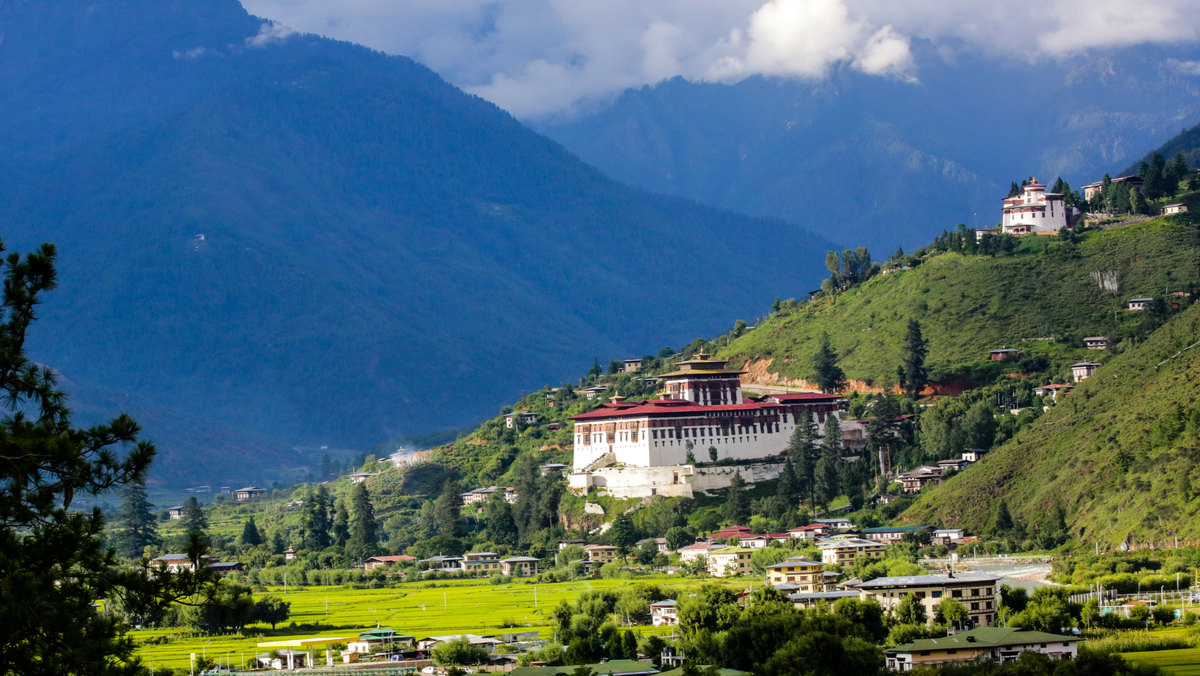
Originally called Rinchen Pung Dzong, the Paro Dzong was built in 1644 by Zhabdrung Ngawang Namgyal. The Dzong is on the slope of a hillside that’s steep, and the central tower is five storeys tall. The Paro Dzong is a sight to adore because of its location and a small Lhakhang located in the east of the structure, dedicated to Chuchizhey. Although most of the chapels in the Paro Dzong are not open to the public, you can still see the chapels from outside and marvel at the beautiful structures. The walls are whitewashed, and give you a sense of peace as you see it from afar. There is a stone-floored space in the entrance’s northeast, where festivities go on every year. The festival ground throngs with dancers in masks as they perform tsechu. The Paro Dzong is a must see when in Paro, and is exquisite enough to plan a visit around it.
Location: Paro, Bhutan
Distance from Paro: Located in the city
Why we recommend this place: The Nyamai Zam, a traditionally carved bridge made entirely of wood adorns the dzong across Paro Chhu. This bridge has been rebuilt, after the original one got washed away in the floods of 1969. The structure is spectacular and deserves a visit.
5. Trongsa Dzong

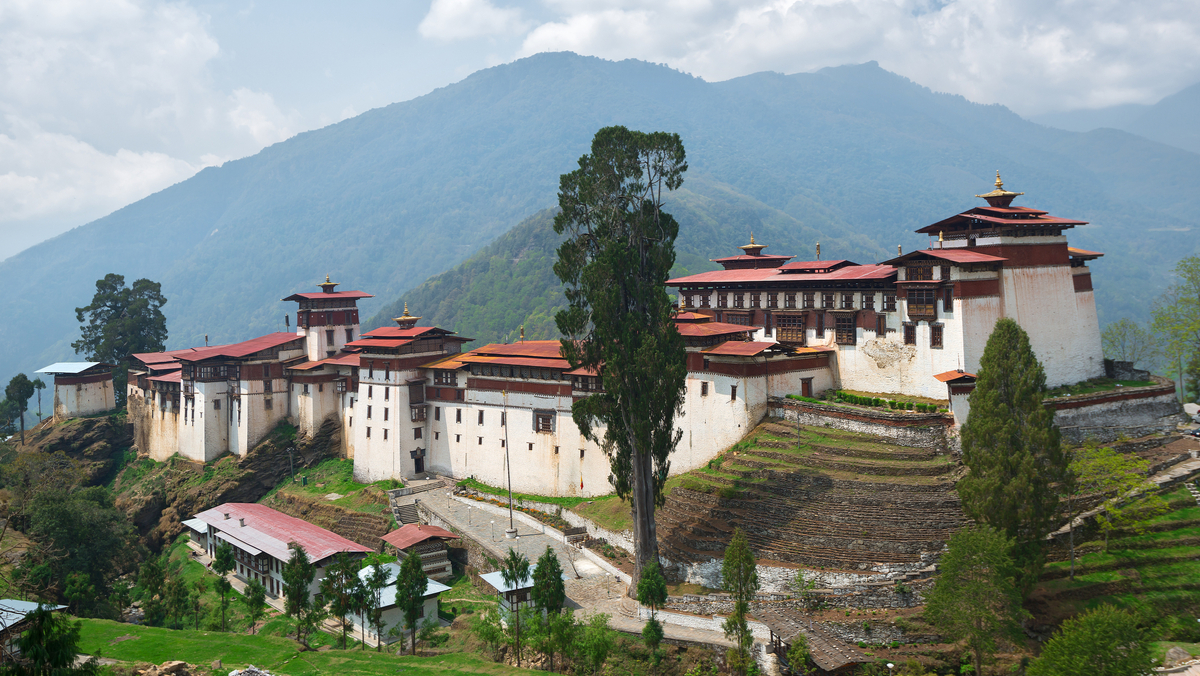
This buddhist monastery in Trongsa is located on the banks of the Mangde Chhu. The place is spectacular because of the steep drom to the south, which vanishes into oblivion for the traveller on the edge. This towering dzong is complete with corridors that have a strong sense of alleys, pretty courtyards, wide stone stairs that are soothingly cold to the naked feet. Ngagi Wangchuck began the very first construction of the dzong in 1517-1554. However, the dzong, as you see it today, was shaped so in 1644 by Chhogyel Mingyur Tenpa. Trongsa is strategically located, because the only route from eastern and western Bhutan goes through the region. The Trongsa Dzong is closely associated with the royal family and therefore holds cultural sentiments among the country’s people. The first two kings, linked hereditarily, ruled from the Trongsa Dzong. According to royal tradition, a crown prince still needs to serve as Trongsa penlop before he becomes the king.
Location: Trongsa, Trongsa district, Bhutan
Distance from Trongsa: Located in the city
Why we recommend this place: The 23 finely designed and decorated Lhakhangs are gorgeous, rich with their royal lineage and are a must see for the crazy traveler. If you are a culture buff, visit Trongsa Dzong during the five-day Trongsa tshechu, which is held sometime in December or January in the northern courtyard of the dzong.
Also, Check out the list of all the tourist places to visit in Bhutan that you shouldn’t miss out when you plan your next holiday to amazing Bhutan.
